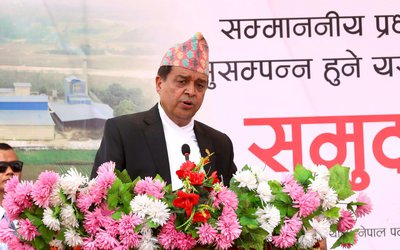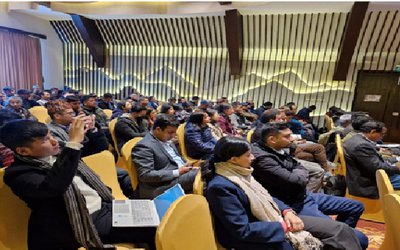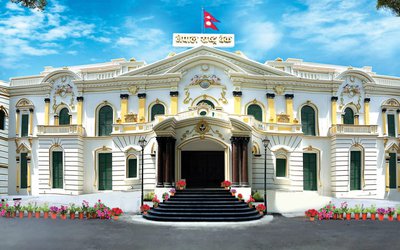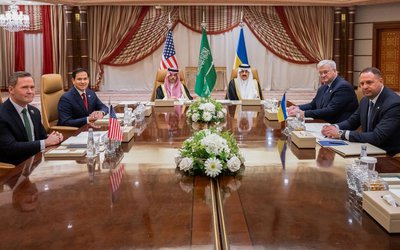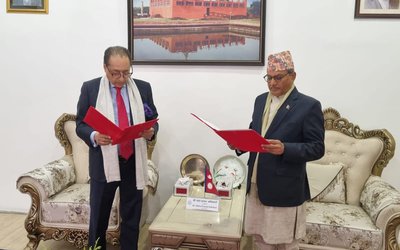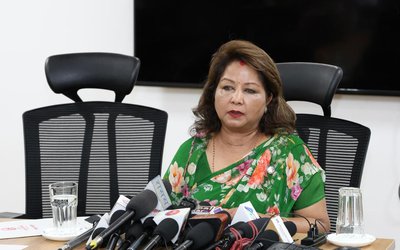According to the World Bank’s latest Global Logistics Performance Index (LPI) report, Nepal has made significant progress in customs procedures, trade logistics quality, tracking system, and timeliness of delivery. As a result, the country’s LPI has moved up 10 places to the 114th position among 167 countries studied under a survey by the multilateral lending institution.
As such, raw materials in Logistics means supplies, freight, equipment, and electricity, and indirect costs of such raw materials and logistics services, including packaging, uniforms, and pallets. Poor logistics planning gradually increases expenses, and issues may arise from the implementation of ineffective logistics software, hence it is important to focus and invest in effective logistics management. Most of these problems occur due to improper decisions related to outsourcing, such as selecting the wrong vendor or carrying out delivery tasks without sufficient resources.
As regards the suggested measures, the role of Nepal Transit and Warehousing Company (NTWC) and Nepal Intermodal Development Board (NITDB) should be made clear in terms of their roles responsibilities, and the scope of work. There is also an urgent and immediate need for the capacity enhancement program to be launched to the relevant stakeholders.
Other suggestions, inter-alia, are: Management of Infrastructure like ICDs/ICPs under Nepalese private sector, Incorporate shipping in a treaty of trade and transit, bringing foreign investment in logistics will ruin further our economy.
Nepal’s trade potential is being stifled by a wide range of issues related to logistics management during cargo movement from the Kolkata-based seaport to the country’s entry points along the Nepal-India border. This has resulted in higher transit costs to transport goods into Nepal.
Despite the progress, Nepali traders are still facing several hurdles while transporting goods through Indian land. They are: Increasing traffic at Kolkata Port, unavailability of adequate number of railway rakes, congestion at Birgunj Inland Container Depot, lack of full-fledged operation of Birgunj Integrated Check Post, and excessive documentation process, among others, were the main concerns
According to Kolkata Port Trust, cargo movement at the Indian port has been increasing at a rate of 14 percent annually. The Indian port receives around 80,000 Nepal bound containers (10 percent of the total 800,000 containers shipment) daily. Similarly, Nepal trades 2.4 tonnes of goods (out of 58 million tonnes in total) via the port almost every day. The Indian port authority provides 10 to 20 days turnaround time for a Nepal bound railway rake. Similarly, Nepal bound containers are provided a 180-day free-storage facility at the port.
The monopoly of the sole service providing agency at Kolkata port, for the delay in cargo movement is one of the basic obstacles. Had we been able to use an alternative railway service via the port, it could have eased in getting the railway rakes to ferry the cargo on time.
In the recent past, Nepal bound cargos have to fulfill compliance procedures under 37 different documentation steps, which takes an additional 3-4 days. “There is a need for enforcing a single-window system and validation of the online documentation to reduce the number of days in cargo movement,”
There is also an urgent need to expedite the Construction and implementation of Integrated Check Post (ICP). A meeting of Indian and Nepali officials to re-observe a decade-and-a-half-old Rail Service Agreement (RAS) was held recently. Nepali traders have long been complaining of: Difficulties in trading with third countries in the absence of timely evaluation and revision of the RAS. Because of the absence of an updated RAS, many contracts and agreements that have been signed between officials of the two countries have failed to be effectively implemented.
Nepal and India signed the RAS in 2004. Through an extensive evaluation of the agreement had been demanded time and again, the only two meetings—held in 2009 and 2012—that have happened since the signing of the agreement could not give meaningful conclusions. With the increase in trade and transit with other countries, Nepal has been demanding there be an extension of railway services in all the trading points across the country. The RAS of 2004 included only the railway transit facility from Kolkata to Birgunj. There has been a drastic change in the nature and quantity of trade in the 15 years of the agreement, so a timely evaluation of the agreement is a must. There needs the extension of the service of containerized and bulk cargo, ways of utilizing the extension of the Janakpur-Jaynagar railway for transit, and railway links (meter and broad gauge).
Nepal has also been requesting India to extend the bulk cargo facility to other important transit points between Nepal and India. Last year, there were talks about the signing of the Letter of Exchange regarding bulk cargo between Nepal and India during the BIMSTEC Summit in Nepal, but it did not take place at the last minute. Nepal should pursue the matter to get Nepalgunj and Bhairahawa also for the bulk cargo.
In the absence of bulk cargo facilities in other transit points, Nepal is compelled to bring all the commodities imported from third countries by transporting them via Kolkata to Visakhapatnam Port through Birgunj. Traders had been demanding to extend this facility to other transit points because the present situation is increasing the cost of raw materials and a decline in the competitive ability of Nepali products. They had been demanding to extend bulk cargo facility to other industrial corridors as well. Meanwhile, India has been saying that there is a lack of railway infrastructure required to extend the bulk cargo facility in other transit points.
Implementation of an Electronic Cargo Tracking System, Nepal should optimally use the VIZAG port and ask for the Dhamra port for future transit transport. Major issues to be addressed for the effective operationalization of Vizag port for Nepal are: There was no transparency & tracking/tracing system in place for the containers being moved from Vizag port to ICD Birgunj. Nepali traders have to depend on CHA/Shipping line for the actual information which is not provided on a timely basis. Due to the unavailability of the Nepal consulate at Vizag port, the documents are routed through Nepal Rashtra Bank, in turn, to trigger “go ahead” to Vizag customs from Nepal Embassy in New Delhi. This entire process is cumbersome and time-consuming.
The Non-frequent rail movement from a monopoly of the recently recruited agency at ICD might add to Business community’s woes if the shipments get stuck at port for more than the transit time taken from Load port to destination port.
Shanker Man Singh Former CEO, NEPSE , SEZ and Nepal Chamber of Commerce
- Nepal-India Trade, Transit And Unauthorized Trade: Some Considerations
- Jan 16, 2025
- PM Oli’s Forthcoming Visit To China: Will The Achievement Be Complete?
- Nov 29, 2024
- Obituary To Dr. Mohan Man Sainju!
- Nov 02, 2024
- Donations To Political Parties: Some Reflections
- Oct 24, 2024
- From the “Tito Satya” of the small screen to the“ChakkaPanja-5 of big screen – Is it "Must see" or Bhaigo" Pass" to watch?-
- Oct 15, 2024




